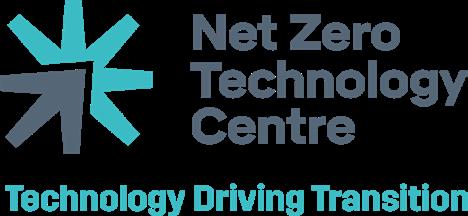

Sustainability Report 2022-2024
NZTC’s vision is for a net zero world, powered by technology innovation.

Our mission is to work with industry, government and academia, driving technology innovation to accelerate the energy transition to net zero. Helping to achieve net zero and embedding sustainability across our organisation are key parts of our strategy, We also support the UN’s 2030 Agenda for Sustainable Development as well as UNFCCC’s Race to Zero Campaign, with the aim to reduce the impact of NZTC’s activities on the environment and promote sustainability and environmental awareness at all levels of the organisation.
NZTC’s management of our sustainability-related performance is set out in our sustainability policy. The policy states that NZTC shall publish a sustainability
report on at least a biennial basis which sets out our sustainability performance and progress on commitments.
This report covers the financial years 2022/2023 and 2023/2024 and sets out our sustainability performance and progress on commitments during this period. As we are now reporting on a financial year basis, this report also includes the period 1 January 2022 to 31 March 2022, and so the report covers the period 1 January 2022 to 31 March 2024. Our last published sustainability report covered the period 1 January 2021 to 31 December 2021.
NZTC supports sustainability through maintaining a Sustainability Working Group (SWG), which is led by a member of NZTC’s Leadership Team. NZTC’s Leadership Team oversees NZTC’s sustainability ambition, targets, performance and external reporting.
The SWG:
Engages NZTC’s employees to drive improvements in NZTC’s sustainability performance and help embed the principles of sustainable development at all levels of the organisation.
Measures, monitors and manages NZTC’s environmental impacts.
As an organisation, our current areas of focus are:
Promoting efficient energy use across all organisational activities.
Preventing pollution and reducing consumption of resources through waste management strategies that promote waste minimisation and recycling.
Promoting the adoption of more sustainable, reduced emission options to commute and travel for work.
Measuring and analysing the carbon footprint of our organisation’s activities in conjunction with other climate change mitigation efforts.
We have used the following standards in preparing this report: ISO GRI G4 Guidelines and ISO 26000:2010, and the Greenhouse Gas Protocol - Corporate Value Chain (Scope 3) Accounting and Reporting Standard.

NZTC’s offices comprise two interconnected buildings containing two electricity meters and a gas meter. The gas meter and one of the electricity meters are smart meters, with the ability to provide half hourly data.
Starting in 2022, the SWG has taken actions to measure, monitor and manage energy efficiency. This includes establishing a process to collect, analyse and monitor our utility bills and associated greenhouse gas emissions data on a monthly basis. In 2023, acquisition of half-hourly gas and electricity
usage data commenced. Analysis showed that more gas was being consumed at the weekends and evenings than in regular office hours. NZTC’s contractor investigated and found that the time controller was defective. When this was replaced weekend gas consumption dropped by 67%.
In February 2024, NZTC’s SWG began a consultation with Business Energy Scotland to help guide and advise NZTC on future energy usage choices and decision-making, and to help us save energy, carbon and money.
Preventing pollution and reducing consumption of resources through waste management strategies
Promote waste minimisation and recycling
NZTC segregates waste at source with food waste, recycling waste and general waste bins throughout the office.
During the reporting period we have:
Provided information to staff for minimisation and correct segregation of recyclable materials
Improved labelling on our recycling bins
Promoting the adoption of more sustainable, reduced emission options to commute and travel for work
We encourage our staff to cycle or walk to work wherever possible and have secure bicycle storage at our offices. We offer a cycle-to-work scheme to all our staff and 16 staff have used the cycle-to-work scheme since its inception. 10% of staff regularly cycle to the office.
Our commuting data comes from daily staff check-ins through an app that monitors which staff are in the office on a specific day. When staff check in for the day, they are asked how they travelled to the office (e.g. by car, bike, walking, electric vehicle, bus).

We conduct transport surveys to help us estimate overall commuting emissions for the period, based on staff vehicle category and fuel type, and commuting distance. The transport survey asks staff what category their car falls under, and which fuel type it uses.
Figure 1: NZTC staff commuting car types (Number of Staff)
In FY 23/24, 74% of journeys to the office were made in employees’ own vehicles, 18% were made by active transport (walking, cycling), and 8% were made by public transport. The data in Figure 1 above shows that 45% (45) of NZTC staff who drive to the office use a petrol car, 29% (29) a diesel car, 7% (7) a battery electric vehicle and 6% (6) a plug-in hybid electric vehicle.
NZTC’s location in Aberdeen is well served by public transport which, in turn, is served by five strategically located ‘Park & Ride’ hubs. While cars remain the most popular way to commute to the office, the use of public transport to the office has increased. In FY 22/23, 194 journeys to the office by bus were recorded. In FY 23/24, there were 304 journeys, an increase of 57% from the previous year. Additionally, journeys by hydrogen bus were up 13%, from 152 in FY 22/23 to 171 in FY 23/24. Overall, journeys to the office by public transport increased by 27%, with 451 journeys recorded in FY 22/23, and 574 recorded in FY 23/24.

NZTC’s business travel emissions have increased over the reporting period, and have been dominated by air travel for the last two years, as Figure 2 shows. Due to travel restrictions imposed by the COVID-19 pandemic, very little business travel took place in FY 21/22, and then it picked up in FY 22/23. NZTC launched its advisory offering, Technology Services, in late 2022 which has added to company business travel, and in particular international travel. In 2022 we selected a new corporate travel provider which could provide greenhouse gas emissions data by transport mode.
Figure 2:
NZTC business travel emissions by category (tonnes CO2e)
Measuring and analysing NZTC’s carbon footprint

Figure 3 shows the evolution of NZTC’s carbon footprint by calendar year, across all scopes. It also shows the 2025 target of a 50% reduction on the 2019 baseline.
Since 2019, NZTC’s business model has changed significantly. We started our Technology Services advisory offering in 2022, which led to a significant increase in business air travel. Staff numbers have also risen and in 2023 there was an increase in staff commuting to and from the office. As a result our emissions increased in 2023 by 50% on 2022 to 142 tonnes CO2e.
In 2021, NZTC set a target to reduce its scope 1 to 3 greenhouse gas emissions by 50% by 2025, against a 2019 baseline, and to be a net zero organisation by the end of 2030. The 2019 baseline is 106 tonnes CO2e for the calendar year 2019. In 2024, NZTC moved to calculating its emissions data by financial year, to align with other reporting done by the organisation.
Given the changes to NZTC’s business model, we will be reviewing our 2025 and 2030 calendar year targets in FY 24/25 so that we continue to focus on tangible greenhouse gas emissions reduction.
NZTC carbon footprint by calendar year, all scopes (tonnes CO2e)
Figure 3:
Figure 4 below shows the evolution of NZTC’s carbon footprint by emission type. The profile is largely driven by our different working models, i.e. full-time in the office in FY 19/20, working from home due to COVID-19 in the following two years, and our current hybrid model from FY 22/23.
NZTC’s overall greenhouse gas emissions have grown at a Compound Annual Growth Rate (CAGR) of 13.96% from FY 19/20 to FY 23/24, although there has been wide variation because of COVID-19. In FY 23/24 the majority of our organisational emissions came from business travel, and business travel and staff commuting accounted for 77% of emissions. This was not the case in FY 19/20 when electricity accounted for the most emissions. In FY 21/22, the electricity supply for one of NZTC’s buildings was switched to a fully renewable tariff which has reduced the share of emissions from electricity.
Table 1 below shows that scope 3 emissions accounted for the largest share in all years except for FY 20/21, and in FY 23/24 were dominant with a 80% share. NZTC’s scope 3 emissions comprise emissions from business travel, commuting, water and waste but exclude supplier emissions.
Our emissions data is taken from several sources:
Electricity, gas and water usage data from our bills is used together with the UK Government’s conversion factors (updated yearly) to produce greenhouse emissions figures.
Business travel data comes directly from our travel provider.

Commuting data comes from daily staff check-ins through our app.
Figure 4:
NZTC greenhouse gas emissions by type, all scopes (tonnes CO2e)
Note
Water usage for 2020 through to 2024 is negligible. Water-related emissions were 0.00 tCO2e for 2020-21, 0.00 tCO2e for 2021–22, 0.02 tCO2e for 2022–23, and 0.06 tCO2e for 2023–24. Waste-related emissions are an estimate. The electricity figure for FY 22/23 has been updated versus last year’s annual report to use our electricity provider’s emissions factor for that year, for our tariff. The same factor has been used for FY 23/24
Table 1:
NZTC greenhouse gas emissions by scope (tonnes CO2e)
Alignment with the Sustainable Development Goals

NZTC is committed to contributing to the UN Sustainable Development Goals (SDGs).
We do this through our own operations and through our advisory offering for our clients. The contribution through our own operations impacts eight SDGs and the contribution through our advisory services has an impact on four SDGs, as shown in Figure 5. Our greatest external area of impact is on SDG 7 Affordable and Clean Energy and SDG 13 Climate Action.

Planned activities for FY 24/25

Business Travel
Review the business travel approval process ensuring that we take account of GHG emissions as well as the more traditional costbenefit.
Commuting
Run a staff awareness initiative on alternative, reduced carbon emission options for travel to work.
Raise the profile of bike safety with staff via internal communications
Energy Usage
Complete the installation of a second smart electricity meter, so that all NZTC utility meters are smart.
Investigate electricity supply switch-over to a renewable tariff for our second building Investigate reductions in energy for heating and lighting, both in terms of technology and user behaviour.
Arrange a Business Energy Scotland survey and implement appropriate recommendations.
Sustainability Data
Acquisition
Review all sustainability data quarterly and take any appropriate actions.

Waste
Conduct a waste composition analysis to reassess carbon emissions from NZTC’s waste.
Visibility & Promotion
Give regular updates to all NZTC staff on our sustainability performance.
Facilities Enhancement
Assess level of electric vehicle charging station usage and possible additional charging capacity. Assess whether cycling to work facilities are sufficient.


